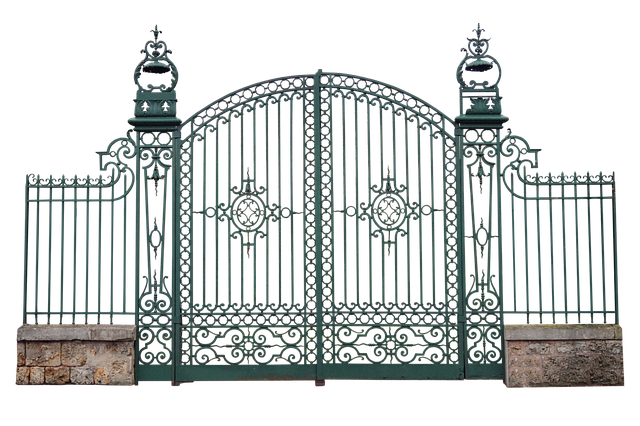DIY Fence Installation Tips for New Bedford Homeowners
Considered a cornerstone of home exterior aesthetics, fences not only enhance curb appeal but also offer privacy and security. For New Bedford, Massachusetts homeowners looking to install a fence, this guide is your comprehensive companion. We’ll walk you through understanding the best fence options for your property, measuring and planning your layout, preparing the ground, assembling your fence using effective tools and techniques, installing it durably and securely, and performing final checks along with essential maintenance tips for longevity.
- Understanding Your Fence Options for New Bedford Properties
- Measuring and Planning Your Fence Layout Effectively
- Preparing the Ground: A Step-by-Step Guide
- Assembling Your Fence: Tools and Techniques
- Installation Tips to Ensure Durability and Security
- Final Checks and Maintenance for Longevity
Understanding Your Fence Options for New Bedford Properties
When it comes to fencing your New Bedford, Massachusetts property, there’s a variety of options to consider. From traditional wooden picket fences to sturdy vinyl or chain-link varieties, each style offers unique benefits and considerations. Homeowners should assess their needs—whether it’s privacy, security, or aesthetic appeal—before making a decision. For instance, wooden fences provide a classic look but require more maintenance, while vinyl options are low-maintenance but might not offer the same level of privacy.
Chain-link fences are durable and provide maximum visibility and security, ideal for homes with children or pets. The key is understanding your priorities and choosing a fence that aligns with your lifestyle and property’s unique characteristics. Researching local regulations and zoning laws related to fencing is also essential, as some areas may have restrictions on height, materials, and placement.
Measuring and Planning Your Fence Layout Effectively
When planning your DIY fence installation in New Bedford, effective measuring and layout are key steps that often get overlooked. Start by clearly defining the perimeter of your desired fence area using stakes and string to mark out the boundaries. This visual representation will help you determine where each section of the fence should go, ensuring a neat and even finish. Take accurate measurements at various points along the boundary, considering any unique features or obstacles in the way, such as trees or utility lines.
Plan your layout on paper, sketching out the shape and size of the fence panels. Consider the height and style you prefer, keeping local regulations in mind to ensure compliance. By doing so, you can effectively visualize the end result and make any necessary adjustments before digging in.
Preparing the Ground: A Step-by-Step Guide
Preparing the ground is a crucial step in DIY fence installation. Start by removing any vegetation, such as weeds and shrubs, from the area where the fence will be erected. Dig up the top layer of soil, about 6-8 inches deep, using a shovel or an electric digger, to ensure that your fence has a solid foundation. Clear the area of any debris, rocks, or roots, and break up large clumps of soil to create a level surface.
Next, measure and mark the perimeter of your desired fence line with stakes and string. This will help guide you in digging holes for the fence posts accurately. Using a post-hole digger, excavate holes at these marked locations, ensuring they are deep enough—typically about one-third to half the height of the fence posts. Place a level in each hole to check that it’s straight before filling them with concrete to set your fence posts securely.
Assembling Your Fence: Tools and Techniques
When assembling your fence, start by gathering all necessary tools and materials. You’ll need a variety of hand tools like hammers, saws, and measuring tapes, along with power tools such as drills and post-hole diggers if your fence requires concrete posts. Ensure everything is in good working condition to avoid any delays or damage during installation.
Techniques vary depending on the type of fence you’re installing. Wood fences typically involve nailing or screwing boards to posts, while chain link or vinyl fences may require specific connectors and clips. Follow manufacturer instructions carefully for best results. Consider seeking guidance from local hardware stores or online tutorials if you’re unfamiliar with a particular method.
Installation Tips to Ensure Durability and Security
When installing a fence in New Bedford, homeowners should prioritize tips that guarantee durability and security. Begin by assessing the site’s conditions; ensure the ground is level to prevent uneven posts that could compromise structural integrity. Proper post placement is crucial; dig holes deep enough (typically 3-4 feet) to accommodate the entire length of the posts, ensuring they’re stable in solid soil.
Use high-quality materials resistant to rot, rust, and pests common in Massachusetts. Galvanized or treated wood, vinyl, or modern composite options offer excellent longevity. Secure fencing with robust hardware; consider using brackets or clips specifically designed for your fence material to strengthen connections. Regular maintenance, including cleaning, sealing, and repainting, will extend the life of your fence and maintain its security over time.
Final Checks and Maintenance for Longevity
Before finalizing your DIY fence installation, perform a thorough inspection to ensure all components are securely fastened and aligned. Check each post, rail, and panel for any signs of damage or misplacement. Tighten any loose connections using the appropriate tools and fasteners. Regular maintenance is also key to extending the life of your new fence. This includes cleaning the fence regularly, treating it with a sealant or paint to protect against the elements, and performing periodic inspections to identify and address any issues promptly.
